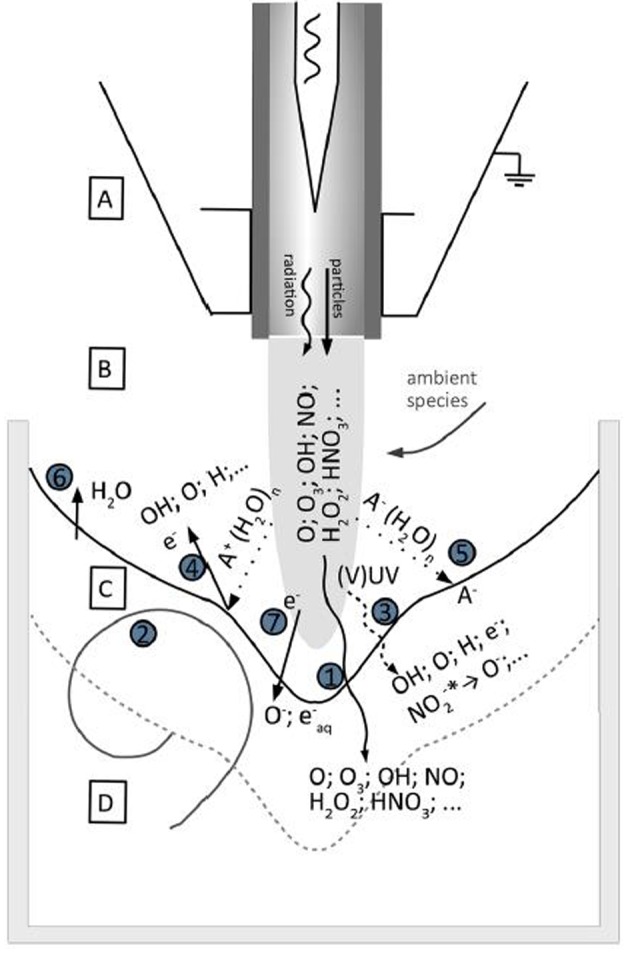Figure 2. Schematic of interactions between the kINPen plasma effluent with aqueous liquid. There are four reaction regions: (A) core plasma region, (B) effluent and plasma-ambient air interaction zone, (C) plasma/gas/liquid interface, and (D) bulk liquid. Seven processes are dominant for the generation of ROS and RNS, and their transfer: (1), (2) mass transfer from plasma to liquid based on gas/plasma component dissolution and gas and liquid flow, respectively, (3) photolysis based on the plasma UV radiation, (4); positive ions and clusters, which induce sputtering processes releasing water, gases, or electrons from the liquid, (5) negative ions, clusters, and cluster transport, (6) water evaporation, and (7) electron impact or transport. (Adapted from 32).

